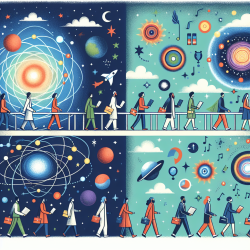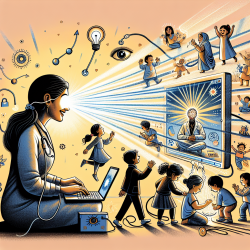Introduction
The intricate relationship between scientific cosmology and social theory is a subject that has intrigued scholars and practitioners alike. The research article "The mule on the Mount Wilson trail: George Ellery Hale, American scientific cosmology, and cosmologies of American science" offers a fascinating exploration of this relationship. The study delves into how scientific understandings of the universe, particularly those developed at the Mount Wilson Observatory, intersect with social theories and practices. This blog aims to provide insights for practitioners in the field of education and therapy, encouraging them to implement the research outcomes and consider further exploration of these concepts.
Understanding the Dual Cosmologies
The article discusses two distinct modes of cosmology: the scientific and the social. While scientific cosmology focuses on the physical universe's dimensions and operations, social cosmology is concerned with the worlds of meaning and belonging that communities create. The research highlights that scientific discoveries, such as those made at the Mount Wilson Observatory, can influence social theories but are not always central to the worlds people construct around themselves.
Implementing Research Outcomes
Practitioners in education and therapy can benefit from understanding the interplay between these cosmologies. Here are some ways to implement the research outcomes:
- Integrate Scientific Concepts: Use scientific discoveries as a metaphorical tool to explain complex social and emotional concepts to students and clients. This can help bridge the gap between abstract scientific ideas and personal experiences.
- Promote Critical Thinking: Encourage students and clients to question and explore how scientific advancements can influence societal norms and personal beliefs. This fosters a culture of inquiry and open-mindedness.
- Foster Place-Making Practices: Like George Ellery Hale, who integrated scientific and social practices at the Mount Wilson Observatory, practitioners can create environments that blend scientific inquiry with social belonging.
Encouraging Further Research
The article suggests that the scientific cosmos may be less essential to the worlds of meaning than local and relational models. This presents an opportunity for practitioners to explore how localized experiences and relationships can shape personal and community identities. Further research in this area can lead to more effective educational and therapeutic practices that resonate with individuals' lived experiences.
Conclusion
The research on George Ellery Hale and the Mount Wilson Observatory provides valuable insights into the intersection of scientific and social cosmologies. By integrating these concepts into educational and therapeutic practices, practitioners can enhance their skills and contribute to a more holistic understanding of human experiences. To delve deeper into the original research, please follow this link: The mule on the Mount Wilson trail: George Ellery Hale, American scientific cosmology, and cosmologies of American science.










